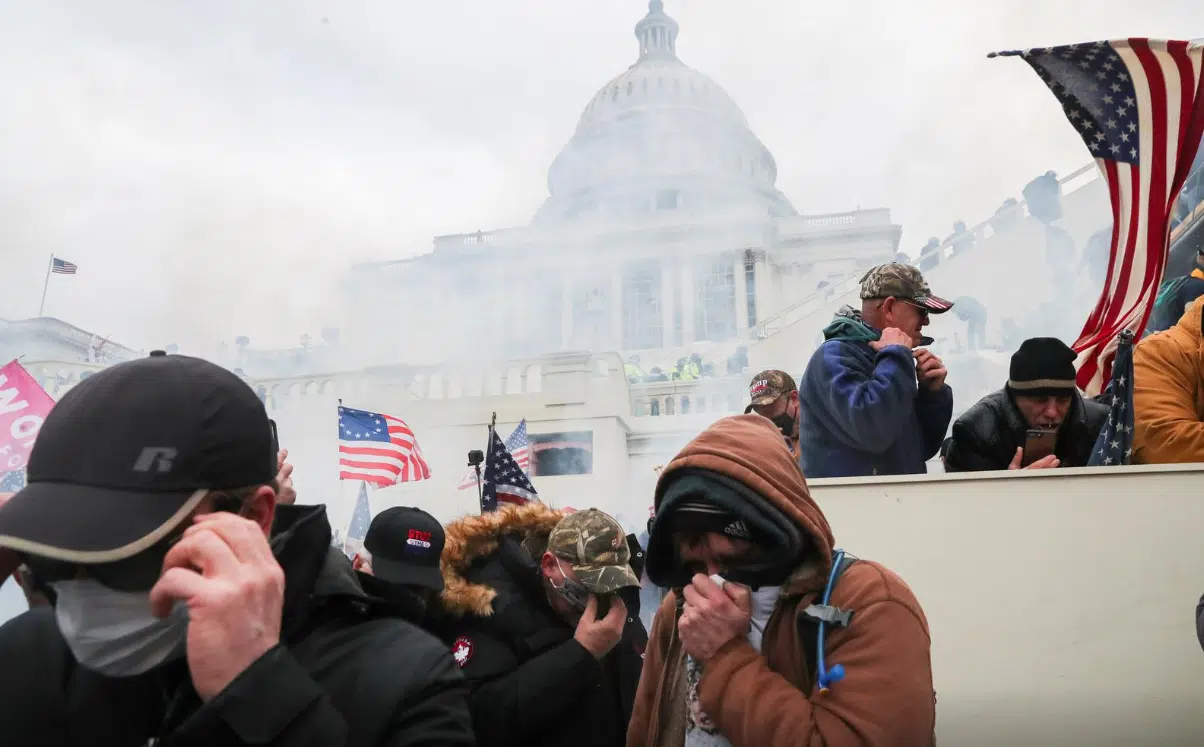OSHKOSH, WI (WTAQ) – As the world continues to absorb exactly what happened as demonstrators stormed the US Capitol building on Wednesday, political scientists are trying to look at what it means in the big picture.
“A lot of people think of what happened as shocking in the capital. But it was pretty foreseeable with the call to gather in Washington DC and ‘Stop the Steal,'” said UW Oshkosh Political Science Professor Dr. David Siemers. “Let’s deal with reality here. Donald Trump talked to a crowd, he said let’s march down Pennsylvania Avenue to the Capitol, and he said let’s get Republican politicians to do the right thing. Which was apparently objecting to electoral college votes.”
The last time anyone breached the Capitol building was in the War of 1812. James Madison was the president at that time, and Siemers knows quite a bit about that era. He’s a James Madison scholar, and has written professionally about the era.
“For the last 200 years, James Madison’s reputation, he was a pretty good president in my view, but his reputation has been sullied by that one day that the British occupied the capitol for about the same amount of time that these Trump supporters did. Madison, who should be known as a pretty decent president, is known as a pretty poor one for it,” Siemers explained. “We’re looking at a stain on the record of Donald Trump that will last forever.”
Siemers says it was lucky that the chamber wasn’t breached while people were in the room, and credited the quick action of staff getting representatives to safe areas during the incident for not letting things get uglier than they did.
As for theories that the individuals who initially entered the building were plants from anti-government or anti-Trump groups, like Antifa, Siemers says once again to look at the reality of the situation.
“There’s just plain everyday evidence that these are Trump supporters, and this is where the Trump presidency ends – in a kind of deadly farce, unfortunately,” he told WTAQ News. “This is happening right now in the United States, so may you live in interesting times.”
There have also been continued suggestions that the president’s Cabinet and Vice President Mike Pence should utilize the 25th Amendment to immediately relieve Trump of his duties. But this isn’t exactly a situation where that would apply.
Siemers says the 25th Amendment was written, at least partially, with Woodrow Wilson in mind. Wilson suffered a stroke in 1919. The amendment has even been invoked a few times, like when Ronald Reagan signed over powers to George H.W. Bush as he underwent surgery in 1985.
“So that was an attempt to, say, if you’ve got a president who is incapacitated, who is so sick, that he or she can’t fulfill the duties of the office – then the vice president and the cabinet can say [that] temporarily, the vice president as acting president,” Siemers said. “But in this case, it’s not so much disability as it is the president potentially doing things that people really consider wrong.”
In terms of safety, Siemers says Capitol Police are being reviewed as their chief resigned this week – and he expects security during the January 20th inauguration ceremony to be ramped up significantly.
“A political scientist like me doesn’t have a crystal ball. We are supposed to know something about the rules and history and that’s what I’ve tried to do here,” Siemers said.
Meanwhile, Siemers has to do more than just study and analyze what is happening in the political realm. He has to figure out ways to teach it to college students. And doing that on the fly isn’t exactly an easy task.
“I was in class when this was happening, right? So I told students that Trump protesters had breached the Capitol building and were inside. There was shock, [we] just don’t think that it would happen in the United States,” Siemers said.
He also reiterated that vocal protests are one thing, and that anyone can say what they want to. That’s part of the First Amendment. But once the temperature rises and people start causing physical damage, that’s where lines are crossed.
“This is one branch of government inciting a riot against another branch of government, and you’re in deep separation of powers problems there,” Siemers explained. “And that’s why the president is going to face another impeachment. It will likely be done by the House of Representatives, and they’re probably trying to talk to senators on the Republican side to see if there are 17 that will go along with that.”
Several of Trump’s Cabinet members resigned following Wednesday’s events. That includes Education Secretary Betsy DeVos, Transportation Secretary Elaine Chao, Special Envoy to Northern Ireland and former Chief of Staff Mick Mulvaney, Deputy National Security Adviser Matthew Pottinger, Deputy Assistant Secretary and the Commerce Department John Costello, White House Council of Economic Advisers Tyler Goodspeed, First Lady’s Chief of Staff Stephanie Grisham, Social Secretary Rickie Niceta, and Deputy Press Secretary Sarah Matthews.






Comments